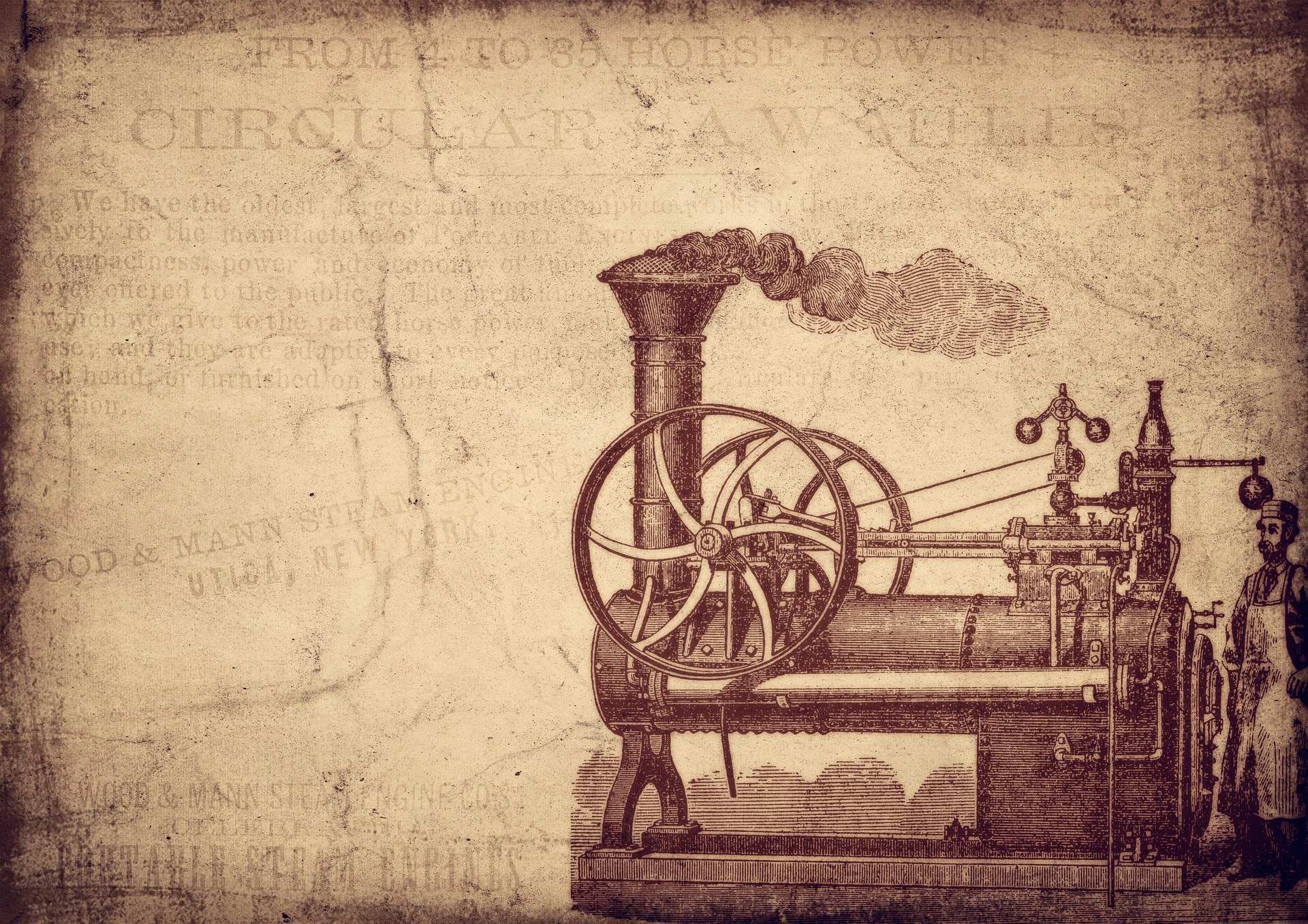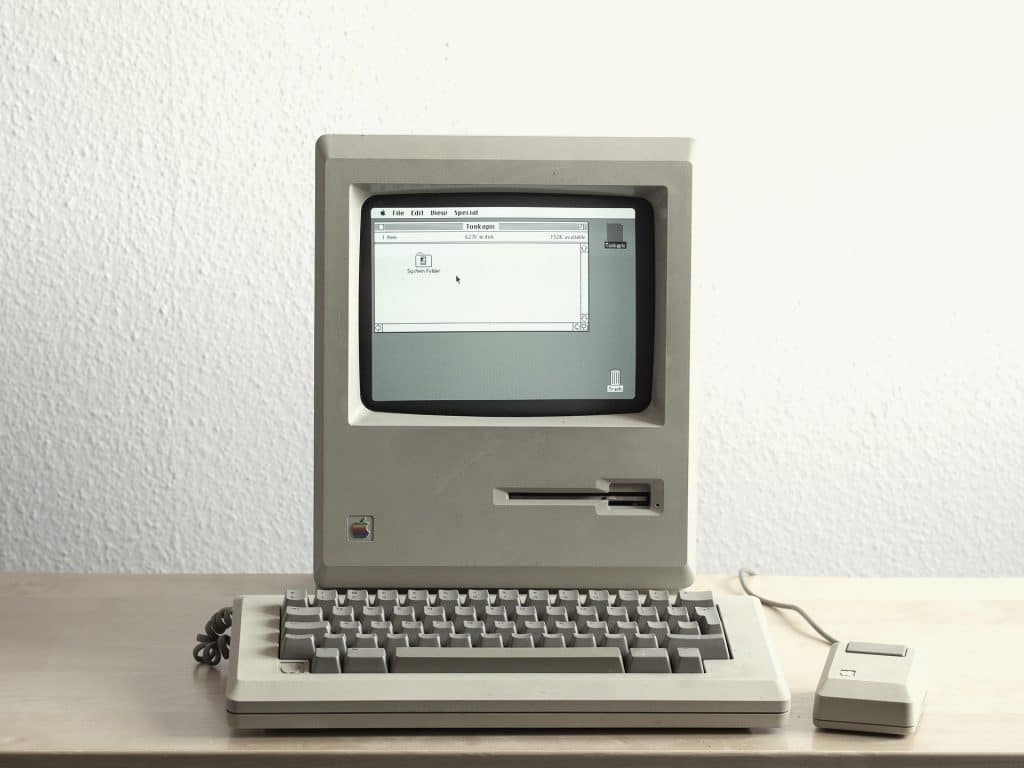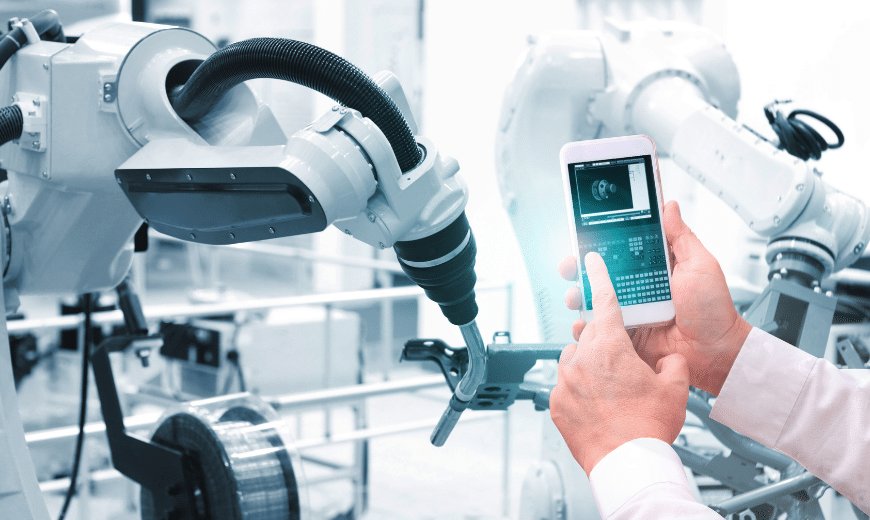We often hear about the industrial revolution 4.0, especially when we come to the digital/technology event. For those of you who don’t know about the Industrial Revolution, The industrial revolution is a stage of technological development. Examples from industry 4.0 are the existence of digital technology to the use of various software in business processes such as HRM software that facilitates the management of human resources within the company. Furthermore, nowadays topics about the coming of the 5.0 industrial revolution have become a conversation. But before knowing more about the 5.0, it would be nice to see the history of the 1.0 to 4.0 industrial revolution.

Table of Contents
- Definition
- History of the Industrial Revolution
- The Development of the Industrial Revolution
- The Implementation of Industry 4.0 Technology on HashMicro
- Conclusion
Definition
The industrial revolution is a change from an agrarian economy to an industrial economy that in its implementation, uses machines to process raw materials into ready-to-use materials. In short, this revolution succeeded in changing the human work system from muscle power to machine power. In the 19th century, this event Industrial Revolution by Friedrich Engels and Louis-Auguste Blanqui.
History of the Industrial Revolution
The Industrial Revolution has been marked by its revolutionary impacts on the economic and socio-political sectors. In the Middle Ages, Europe applied its largest system of power to the nobility, called feudalism. Thus, only nobles or royal descendants can open economic activities. At that time, the state of the UK economy also relied on the closed agricultural sector or latifundium. That happens because of the system of feudalism itself.
The Development of the Industrial Revolution
As you know, the industrial revolution has four stages of change. From the 1.0 in 1750 to the 4.0 industrial revolution that we are currently experiencing. At each of these stages, there are historical events that mark the beginning of the revolution. To find out, let’s look at the following explanation:
Industrial Revolution 1.0
 (Source: pixabay.com)
(Source: pixabay.com)
In the 18th century, the primary energy source in the production process still relied on traditional labor. Such as human, animal, water, and wind power. But in the end, this period found its bright spot with the invention of the steam engine by James Watt. This discovery also marked the emergence of the first revolution.
With the use of the steam engine as a means of producing goods, productivity increased rapidly. The economic sector also jumped as a result of high productivity. Also, the community was already free from feudalism and could carry out production without regard for extensive land expanses.
Also read: Factory Software to Improve Manufacturing Process
Industrial Revolution 2.0

At the beginning of the 20th century, the Second Revolution started with discovering electric power. Also around this era, they invented cars and put them into production. However, The production process was running so slow by time constraints. One car assembler must alternately assemble each vehicle at the same time and place. The solution appears in the coming of the assembly line system.
Have you ever seen a product run by itself on a factory machine? If so, it is an example of an assembly line. In 1913, the car production process began to use this production line to facilitate the manufacturing process. The assembly line operates using a conveyor belt.
With this assembly line system, the production process system turns into specialization. So each employee will work on the part that he feels is his expertise from the training obtained.
This industrial change also had a strong influence on World War II. The 2.0 revolution filled this period with mass production to manufacture tanks, fighter planes, and weapons.
widely used to support the production process in industrial factories with much more sophisticated technology. For example, it has been integrated with supply chain management software, so your business can get complete visibility and analysis to manage products and materials accurately and designed to keep up with rapidly changing markets.
Industrial Revolution 3.0

At the end of the 20th century, human participation began to decrease with the start of the digital era. Many analog machine technologies have turned into digitally advanced technologies. A computer can perform tasks such as calculating formulas, transmitting documents remotely, and monitoring financial management.
After 3.0, the industrial age slowly transitioned into the information age. This third revolution is the most important for the manufacturing sector because manufacturing is very difficult to do by humans and requires a high level of precision and accuracy. In an effort to utilize information technology, the production process has been computerized to produce large production quickly.
Industrial Revolution 4.0

This industrial revolution started from the years 2000 to the present. This 4.0 revolution can be said as a significant upgrade from the technology of the 3.0. In this 4.0, the process focuses on developing the digital world such as IoT (Internet of Things), data exchange such as cyber-physical, cloud computing, cognitive computing, manufacturing power, and many more.
This revolutionary change provides a very significant difference in all aspects. They no longer focused on the industrial sector. Now all fields such as work, education, and people’s daily lifestyles have been digitized. In essence, industrial revolution 4.0 applies digitalization to all aspects of life.
Things that we might not have expected before, such as the emergence of new jobs as graphic designers, content creators, online motorcycle taxis, and positions that were previously done directly (analog), can now be done with just the touch of a finger.
The Implementation of Industry 4.0 Technology on HashMicro

As previously mentioned, technology 4.0 creates many technological developments in aspects of life. For example, the business system can now be automated by a certain program. HashMicro has a set of software that functions to manage and integrate various operational activities in a company, like accounting, inventory, procurement, and many more. Also, HashMicro has software that can automate various aspects of a business. This software is ERP (Enterprise Resource Planning).
ERP software makes it easy for business people or companies to facilitate business with real-time and accurate information so that you can earn good business decisions based on the data generated. By collecting transaction data from multiple sources, ERP systems prevent data duplication by providing data integrity. Of course, this convenience is evidence of efforts to take advantage of industrial revolution 4.0 technology that makes it easier for humans.
Conclusion
Change does not always have a bad meaning. With the industrial revolution 1.0 to 4.0, technology has positively impacted society when humans experienced it. In the past, human movement was limited to the ability of nature, power, and energy. Now the industrial revolution gives us free and fair space to run the economy.
Because, in truth, change will always occur over time. The difference also gives us new problems to deal with. But from these problems, solutions that are useful for technological progress and provide a better life for humans are created.
Warning: Undefined array key "med" in /home/hashmicr/public_html/blog/wp-content/plugins/insert-headers-and-footers/includes/class-wpcode-snippet-execute.php(419) : eval()'d code on line 281

Furthermore, this industrial revolution had a big impact on manufacturing companies. Companies that run their business using conventional methods tend to have a slow tempo in their development. Therefore, automation of manufacturing business processes is one solution that can apply. HashMicro as an ERP software provider provides various solutions for your business, one of which is manufacturing automation software. By using manufacturing automation software, you can increase the productivity and profitability of your business. The software provides up-to-date system services, automatic scheduling, and quality and cost control. You can also forecast demand accurately so that there is no excess or shortage of inventory. If you are interested on using this system, click here to try the free demo.













